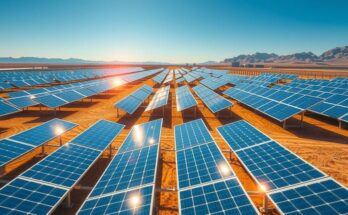The Amazon rainforest is increasingly threatened by fossil fuel drilling led by the Brazilian government, particularly promoting Petrobras. Environmentalists oppose this action due to climate change-related droughts. Significant oil spills have occurred in Peru, Colombia, and Ecuador, compounding ecological damage. Legal restrictions exist, but discussions in Brazil may allow drilling in Indigenous territories. Major banks finance these projects, raising ethical concerns about their environmental impact.
The Amazon rainforest is currently facing an increased threat from fossil fuel drilling, positioning it as a significant area for oil and gas exploration. The Brazilian government, led by President Luiz Inacio Lula da Silva, is placing pressure on environmental authorities to permit state-controlled Petrobras to conduct drilling activities in the Equatorial Margin. Environmental groups demand a halt to fossil fuel extraction amidst concerns that climate change has exacerbated drought conditions in the region.
Fossil fuel extraction predominantly occurs near the western edges of the Amazon basin, encompassing southern Colombia, eastern Ecuador, and northern Peru. These areas have been engaged in oil drilling since the late 1960s, with Brazil’s largest inland fossil fuel fields being active since the 1980s. As of 2023, oil and gas exports are vital to the economies of neighboring countries, with Guyana and Venezuela relying heavily on these resources, and Brazil’s oil and natural gas constituting 16% of its exports.
The environmental repercussions of oil drilling are profound. In Peru, Colombia, and Ecuador, leaking pipelines are responsible for numerous oil spills, compromising local water supplies and ecosystems, while posing significant health risks. Oxfam’s report recorded 474 oil spills in the Peruvian Amazon from 2000 to 2019, while over 4,600 spills were reported in Ecuador between 2006 and 2022, according to a report by Stand.earth and COICA.
There are areas where fossil fuel extraction is legally restricted, such as the Yasuni Amazon reserve in Ecuador, where a referendum in 2023 prohibited operations by state oil company Petroecuador. In Brazil, drilling is barred in Indigenous territories; however, there are discussions in Congress that may undermine these protections, reflecting tension with Indigenous rights.
Financing for Amazon oil and gas drilling primarily comes from major banks, with Citibank, JPMorgan Chase, Itaú Unibanco, Santander, and Bank of America being the top investors. They have collectively financed over $20 billion for oil and gas projects in the Amazon over the past two decades, which undermines calls for environmental responsibility in their investing strategies.
The ongoing fossil fuel drilling in the Amazon rainforest raises significant environmental concerns amid governmental pressures to expand oil and gas exploration. The repercussions of this extraction on local ecosystems and Indigenous rights continue to be alarming, while major banks remain pivotal in financing these activities. As the struggle between economic interests and environmental preservation intensifies, the fate of the Amazon hangs in the balance.
Original Source: www.context.news




